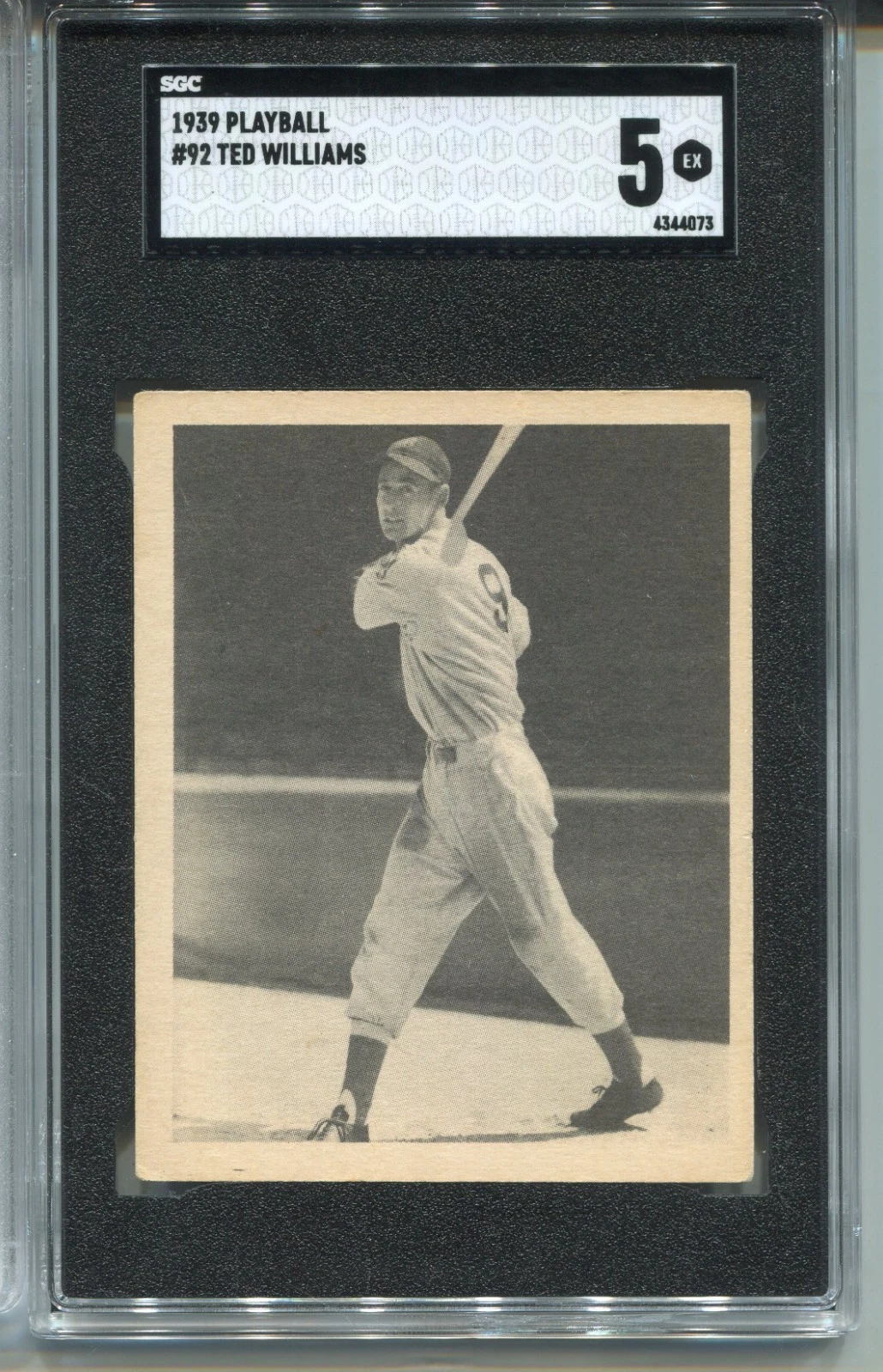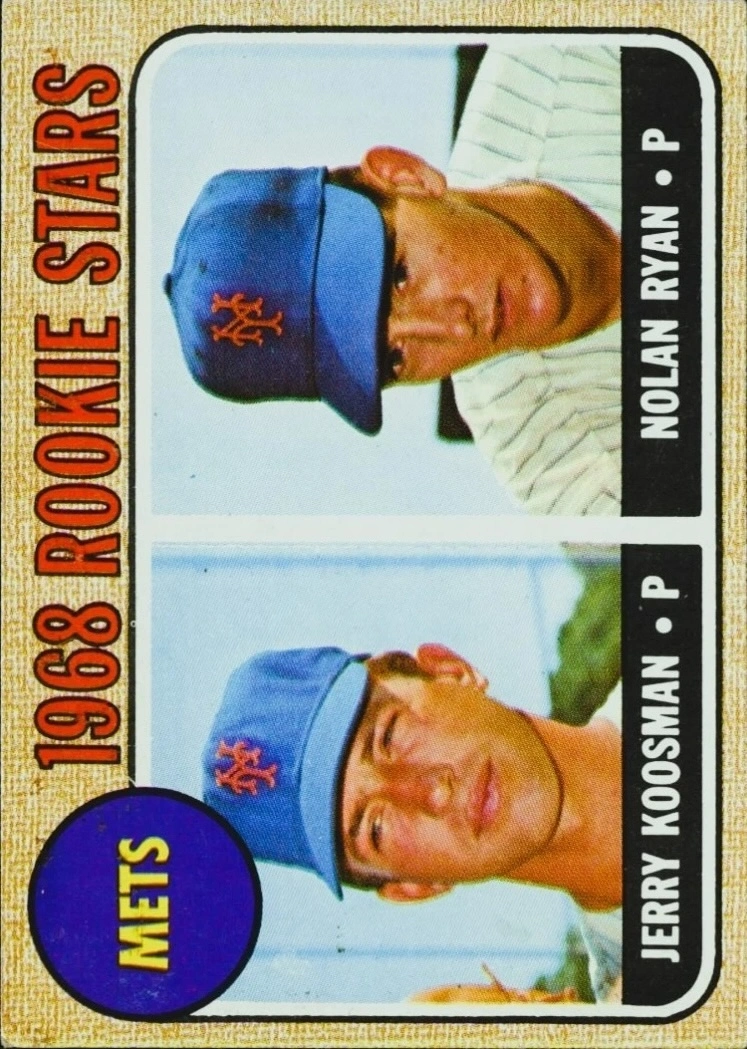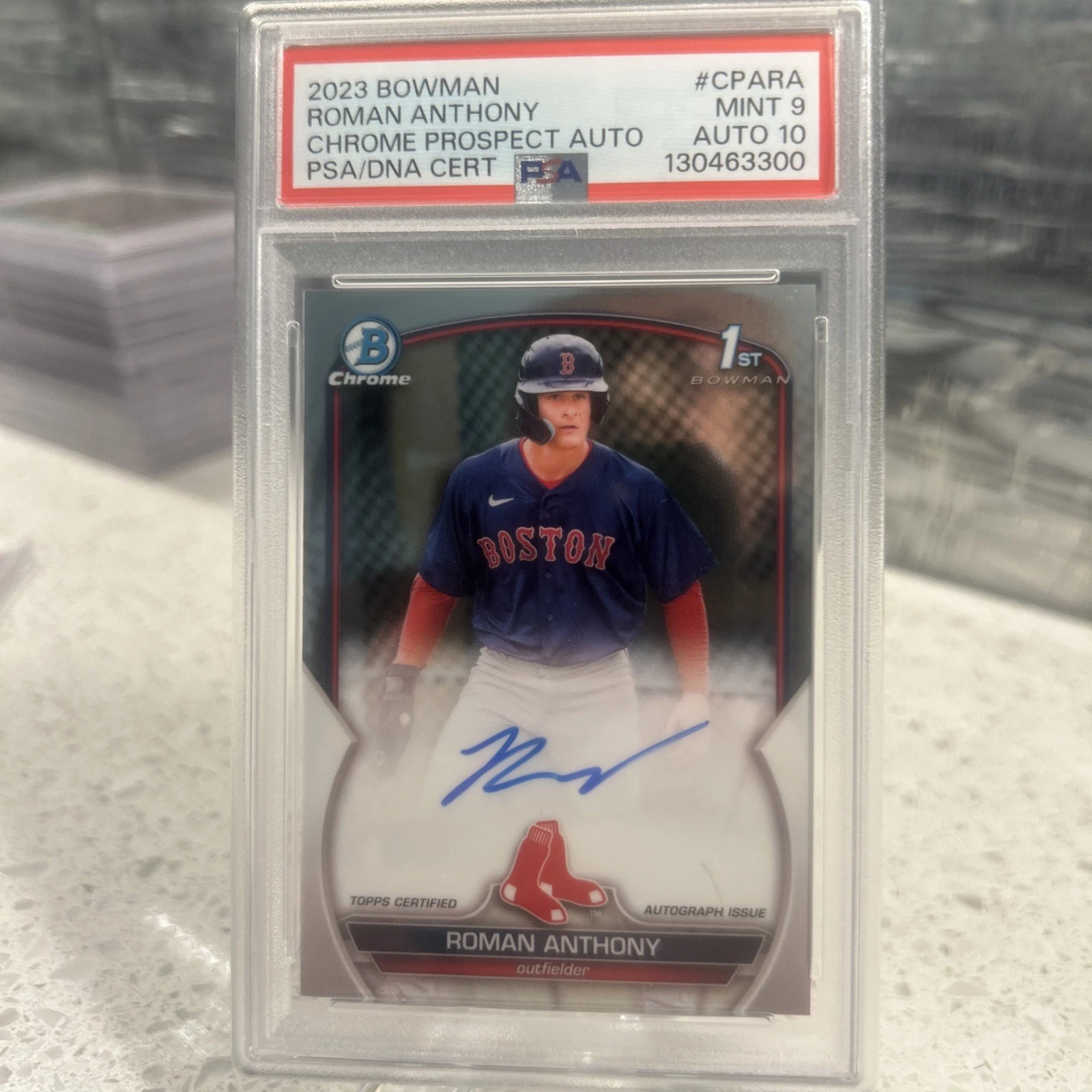
Ted Williams Rookie Cards
Ted Williams rookie cards center on his 1939 Play Ball #92, with 1939 Goudey Premiums and World Wide Gum issues rounding out a small but important rookie-year group. High-grade examples are scarce, so many collectors focus on strong eye appeal in mid-grade vintage slabs.
Best Ted Williams Rookie Cards


Values & Trends
Ted Williams rookie and early-career cards sit near the top of vintage baseball collecting. His 1939 rookie season with the Boston Red Sox and his all-time hitting profile keep steady demand for the 1939 Play Ball #92 rookie card, with 1939 Goudey Premiums, 1939 V351 World Wide Gum, and early Play Ball and Double Play issues rounding out the core run. High-grade copies are scarce, and even well-loved examples attract collectors who want a piece of one of the greatest hitters in history.
- True rookie focus: Most collectors recognize 1939 Play Ball #92 as Ted Williams’ true rookie card, with 1939 Goudey Premiums and World Wide Gum treated as important rookie-year companions.
- Scarcity and condition: Late 1930s and early 1940s cardboard often shows toning, corner wear, and print issues; strong centering and color are much harder to find than on many post-war sets.
- Grade sensitivity: There is a wide spread between entry-level grades and top-end slabs for 1939 Play Ball #92 and early Bowman and Topps issues; eye appeal within a grade band drives big price gaps.
Buying Guide: How to Pick Ted Williams Rookie Cards
- Start with the flagship rookie: Focus first on 1939 Play Ball #92 in the best centering and color you can afford; this is the cornerstone Ted Williams rookie card.
- Add rookie-year companions: 1939 Goudey Premiums (R303-A) and 1939 V351 World Wide Gum issues are larger-format and Canadian alternatives that many vintage collectors treat as key rookie-year pieces.
- Build into early Play Ball and Double Play: 1940 Play Ball #27, 1941 Play Ball, and 1941 Double Play give you a fuller early-career run that pairs well with the true rookie.
- Consider iconic post-war cards: Cards like 1954 Topps #1 and 1956 Topps #5 are not rookies but are classic Ted Williams cards that many collectors add once the core rookie group is covered.
- Check centering, toning, and print first: Vintage Play Ball and early Topps stock can show focus issues, print specks, and uneven borders. Prioritize eye appeal within your budget before deciding whether to grade.
- Use grading and recent sales as tools: Compare recent sales for the exact card and grade you are targeting, and use grading when a card’s surfaces, corners, and centering suggest a realistic shot at a strong result. Submission economics and quick slab checks can help you decide when grading makes sense on high-value vintage Williams cards.
Full Rookie Card Checklist
| Image | Card | Year | # | Details | 90d Avg RAW | 90d Avg PSA 3 | 90d Avg PSA 5 | eBay |
|---|---|---|---|---|---|---|---|---|
Play Ball Rookie Card Ted Williams · Play Ball | 1939 | 92 | — | — | — | — | eBay | |
Play Ball Second-Year Card Ted Williams · Play Ball | 1940 | 27 | — | — | — | — | eBay | |
Play Ball Early-Star Card Ted Williams · Play Ball | 1941 | 14 | — | — | — | — | eBay | |
Topps Return From Service Ted Williams · Topps Return From Service | 1954 | 1 | — | — | — | eBay | ||
Topps Final Playing-Year Card Ted Williams · Topps Final Playing-Year | 1956 | 5 | — | — | — | eBay |
True RC, Premiums & Early Issues
The hobby widely treats 1939 Play Ball #92 as Ted Williams’ true rookie card. Large-format 1939 Goudey Premiums (R303-A) and the 1939 V351 World Wide Gum issue are collected as important rookie-year pieces rather than separate flagship RCs. Early Play Ball cards from 1940 and 1941, plus the 1941 Double Play card pairing Williams with another star, sit just behind the true rookie as core early-career targets. Later Bowman and Topps cards, especially 1954 Topps #1 and 1956 Topps #5, are not rookies but rank among the most recognizable Ted Williams vintage cards.
Grading & Population
Grading has a big impact on Ted Williams rookie and early-career card values. 1939 Play Ball #92, 1939 Goudey Premiums, and 1939 World Wide Gum were printed on stock that does not always age cleanly, and truly high-grade examples are rare. Population reports show small pools of top slabs, especially in PSA 8 and above, which helps explain the gap between entry-level grades and top-end prices.
- Review population data and recent sale snapshots for 1939 Play Ball #92 and key early issues before you buy or submit, paying close attention to how many high-grade copies exist.
- Focus on centering, color, and surface quality when pre-screening raw cards. Vintage printing can introduce soft focus or registration issues that hold grades down even when corners look strong.
- When buying already graded copies, compare eye appeal within a grade band; two PSA 4s can present very differently on 1939 and 1940 Play Ball stock.
About Ted Williams

Ted Williams, known as "The Splendid Splinter," "Teddy Ballgame," and "The Kid," debuted for the Boston Red Sox in 1939 and became one of the greatest hitters the game has ever seen. He finished with a .344 career batting average, 521 home runs, and two MVP awards, with prime seasons interrupted by military service in World War II and the Korean War. That mix of peak production, iconic stories, and Boston franchise history keeps strong demand for his 1939 Play Ball rookie and early vintage cards across all grades.






